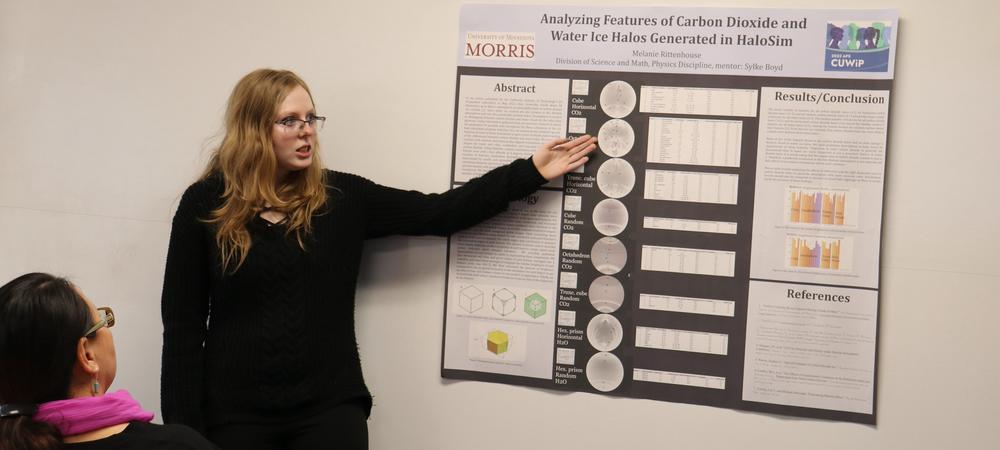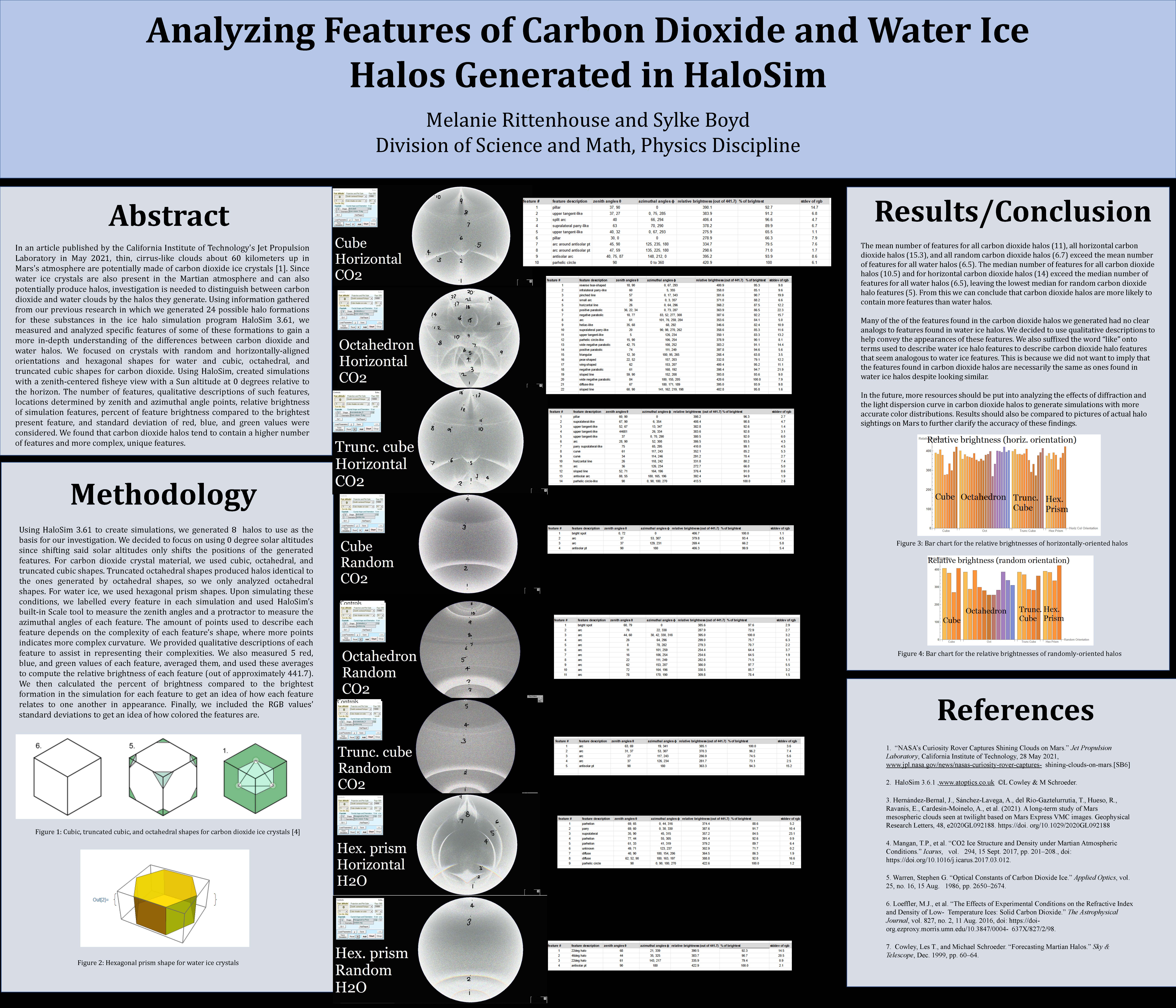
Have you ever wondered what you might see in the sky from the planet Mars? Melanie Rittenhouse ’25, Fergus Falls, has. In fact, she presented a poster about optical phenomena in that planet’s atmosphere during the 2023 Conference for Undergraduate Women in Physics (CUWiP).
Rittenhouse was one of six physics students from the University of Minnesota Morris who attended the conference, which was held in January 2023 at the University of Iowa. The conference trip was supported by the Science and Math Alumni Fund.
The goal of CUWiP is to help undergraduate women continue in physics by providing them with the opportunity to experience a professional conference, information about graduate school and professions in physics, and access to other women in physics of all ages with whom they can share experiences, advice, and ideas.
Rittenhouse cites an article published by the California Institute of Technology's Jet Propulsion Laboratory in May 2021 as the starting point for her research. The article reported that cirrus-like clouds about 60 kilometers up in Mars's atmosphere are potentially made of carbon dioxide ice crystals. Since water ice crystals are also present in the Martian atmosphere and can also potentially produce halos, Rittenhouse focused on trying to distinguish between carbon dioxide and water clouds by the halos they generate.
“We used a program called HaloSim, which takes in a bunch of different parameters for the particles suspended in the atmosphere and generates halos based on that input. Basically, we took screenshots of the different halos and analyzed them. For example, the number of features they had, what those features looked like, the positions of those features, the color values of the features. We recorded those features in a table then used that for comparison.”
Rittenhouse admits that she didn’t know too much about atmospheric physics before working on this project. “But when Professor [Sylke] Boyd proposed this idea, I was interested.”
Rittenhouse started this project as a freshman and worked on it throughout her sophomore year, acquiring the needed mathematical skills in various math courses. This included learning to manipulate geometric shapes in 3D space and represent them numerically in number tables.
Rittenhouse received an Undergraduate Research Opportunities Program (UROP) award in spring semester 2021 to work on the project with Boyd, associate professor of physics.
“I was pretty excited to present my poster at this conference, because I have never done anything like this before,” Rittenhouse added.
The posters were judged on a scale of 1 to 5 in three different categories. Rittenhouse’s poster received one 4, and 3s in the other categories, which she felt was pretty standard.
“I was really nervous, not knowing what other presenters’ research might be,” Rittenhouse said. “I worried that my research might not be comparable, so I was relieved to score in the average range.”
Boyd noted that the optics involved in the light scattering processes in clouds was all new to Rittenhouser at the time.
“Her exploration into Martian halos primarily required her to design a series of computer experiments. That includes everything from posing a good question, becoming familiar with a new program (HaloSim), deciding on variables and fixed conditions, mastering the file system and file conventions of the program, creating the simulations, extracting data, and analyzing the results.”
Boyd said that Rittenhouse’s work was done during COVID, which meant the research was done by Zoom meeting only.
Rittenhouse encourages other students to consider opportunities to participate in conferences like CUWiP. “It gives you a holistic understanding of everything you did during your research and I recommend doing it.”
